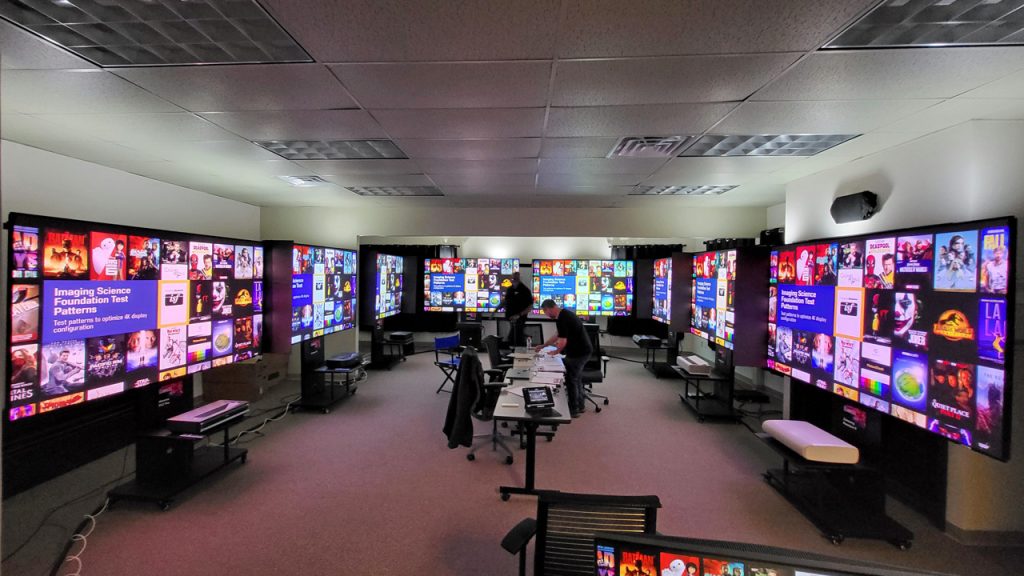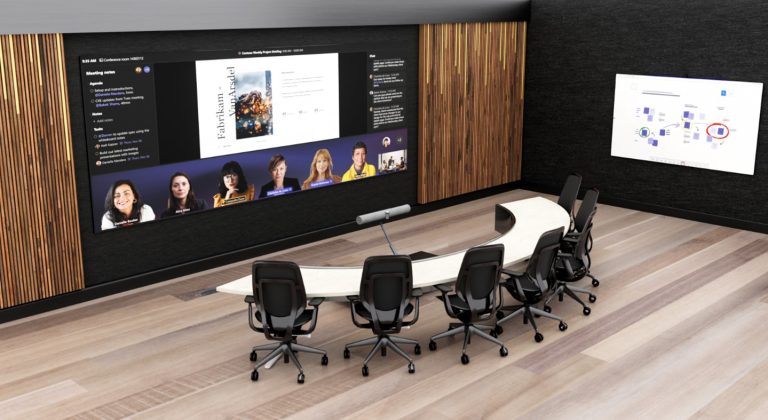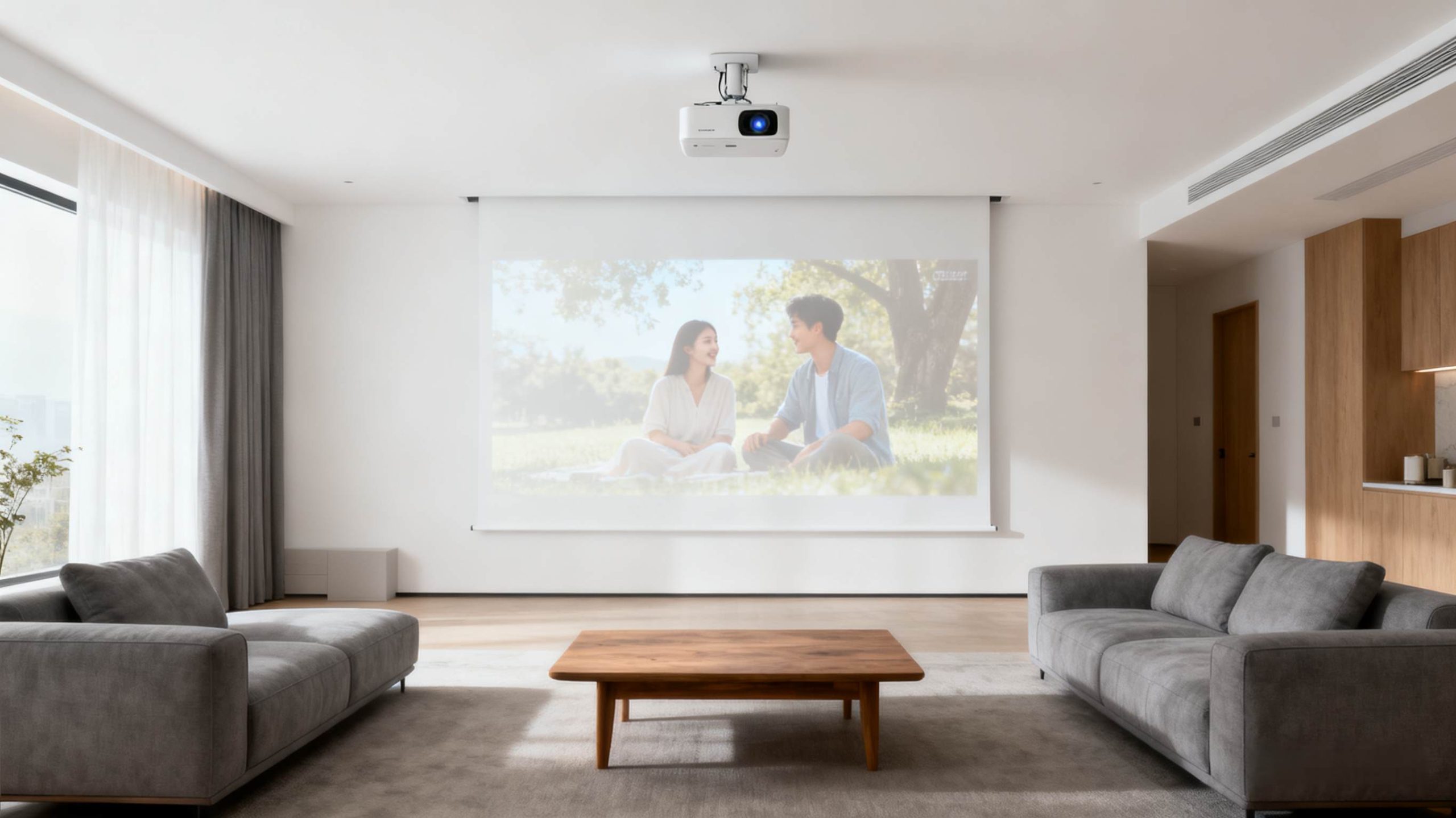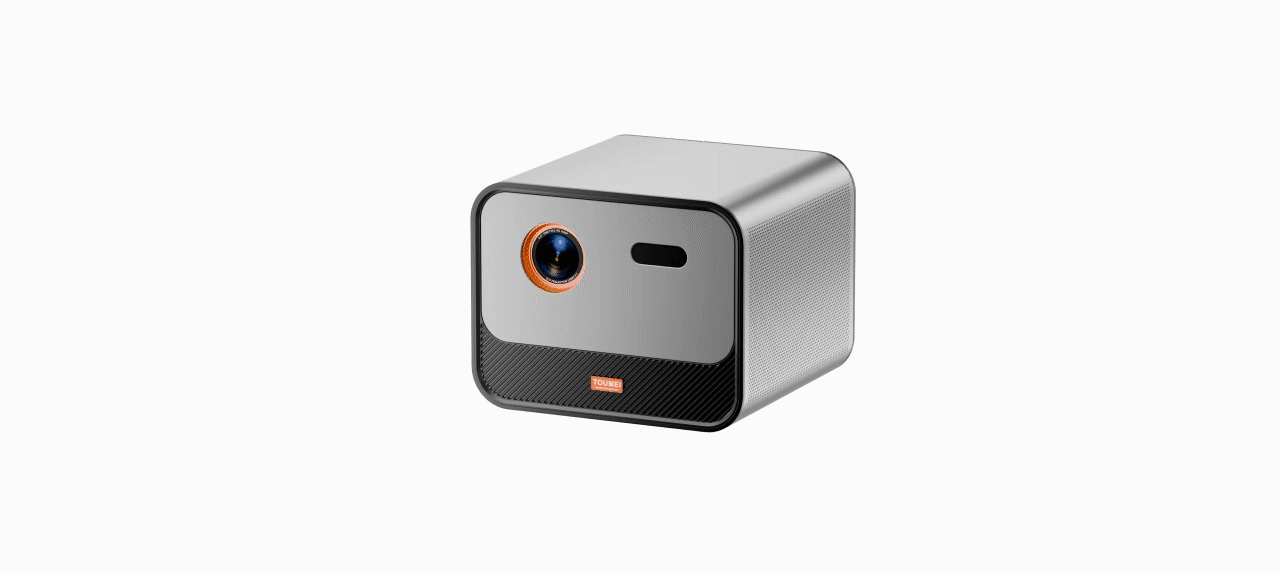
How Bright Should Your School Projector Be?
- 4000 ANSI Lumens: This is the recommended minimum for most standard classrooms. In a classroom situation with controlled lighting but some ambient light, this is the recommended brightness for a school projector gives a clear vibrant image.
- 5,000-6,000 ANSI Lumens: A brighter education projector is required for larger classrooms, lecture theatres or multi-purpose rooms with daylight so that every student can see the content clearly.
What Resolution Does Your Classroom Projector Need?
- Full HD (FHD / WUXGA): A resolution of 1920×1080 or 1920×1200 is now the mainstream standard for any new school projector. It provides sharp detail for videos, presentations and web browsing.
- 4K Ultra HD (4K UHD): 4K (3840×2160) is rapidly moving from a premium choice to routine expectation for an education projector. The supply of 4K content and the necessity of fine detail in areas like CAD or medical imagery guarantee it is a wise investment to purchase 4K school projectors to future-proof your classrooms.
Portable vs. Installation Classroom Projectors
- Portable School Projectors: A 2025-model portable school projector is the correct product type when an instructor teaches in various rooms or classrooms. They are lighter, smarter and in various instances contain a rechargeable battery and such impliment smart operation systems.
- Installed School Projectors: The is a fixture the majority of classrooms will have. Most often ceiling-mounted, This is a powerhouse projector and will be incorporated as a mainstay element of the AV solution to insure long life and reliable service.
Recommended Features for a 2025 School Projector
- Laser Light Source (The major trend): There is no longer the need to change lamps as with the old technology. A laser school projector in 2025 has approximately 20,000 to 30,000 hours of maintenance free operating time. This means that the projector for classrooms requires hardly any maintenance during its lifetime.
- Smart & AI Features: In a 2025 report on education, it is shown that greater than 85% of teachers are now using AI tools. Your education projector should be able to support this. Look for projectors that have built in smart systems (Android TV) and also those that have AI powered auto correction, the ability to refocus, rectify keystone problems and also to avoid obstructions on the wall.
- Wireless: All modern school projectors must support Wi-Fi, Miracast and Bluetooth. This means that teachers and students can instantly cast screens to laptops, tablets or smartphones to allow for effortless collaboration.
Should You Buy an Ultra Short Throw (UST) Projector for Your Classroom?

School Projectors vs. Interactive Flat Panels (IFPs)
Budgeting: Understanding Your School Projector's Total Cost of Ownership (TCO)
Solving Key Technical Challenges: The 2025 Solutions
- Challenge: Ambient Light Washout
- The Problem: In the classroom, sunlight through the window and bright overhead light are the enemies of a classroom projector, producing a faded, washed out image that is difficult for students to see.
- The Solution: High-Bright Laser + ALR Screen. School projectors in 2025 use a laser light source that is in excess of 4000 lumens bright (and is perceived even brighter than lamp models). A bright education projector combined with an ALR (ambient light rejecting screen) gives the visual image a high contrast, almost TV-like image in a bright room.
- Challenge: Maintenance Costs & Dust
- The Problem: School IT budgets are tight. Frequent lamp replacements and filter cleanings are a constant drain. If dust gets into the projectors, it will cause spots on the image and ruin internal workings.
- The Solution: IP rated sealed laser engines. Modern school projectors (particularly DLP types) now use sealed optical engines which carry an IP5X or above (IP6X) dust-proof rating. This, as well as 20,000+ hour laser life means that classroom projectors can be “set it and forget it” solutions drastically reducing the Total Cost of Ownership.
- Challenge: Complex Connectivity & “BYOD”
- The Problem: Teachers need a way to connect the laptop and document camera while students want to share content using their tablets (BYOD Bring Your Own Device). No one likes too much cabling which is messy and wastes valuable instruction time.
- The Solution: This would be built-in Smart Systems & Wireless Casting. Look for school projectors with built-in Operating Systems (like Android TV). These allow teachers use of apps and files without a computer. More importantly built-in SYSTEMS provide pair with good wireless casting (like Miracast and AirPlay) for one-click screen sharing from any device.

Conclusion
These are the two main imaging technologies. 3LCD projectors (common with brands like Epson) tend to offer superior color brightness and saturation. DLP projectors (common with brands like Optoma and BenQ) are known for their deep black levels, high contrast, and a sealed-chip design, which often means less maintenance and better durability in dusty environments—a major plus for a school projector.
A laser light source is typically rated for 20,000 hours. To put that in perspective: if you use your classroom projector for 6 hours every single school day (180 days a year), it would still last over 18 years. You will likely upgrade the projector for new technology long before the laser source ever burns out.
While you can project onto a white wall, a screen provides a much better image. For a school projector in a room with ambient light, an ALR (Ambient Light Rejecting) screen is a fantastic investment. It's engineered to reflect the projector's light while absorbing light from windows and ceiling fixtures. For UST projectors, a dedicated UST screen is highly recommended to ensure a perfectly flat, non-distorted image.
Absolutely. This is a core feature for 2025. Most new education projectors have built-in wireless casting protocols (like Miracast or proprietary apps) that allow students and teachers to share their screens from Windows, Android, and Apple devices with a single click, eliminating the hassle of cables.
While they share core technologies, an education projector is purpose-built for the demands of a classroom. This often means more robust connectivity options, enhanced durability (like IP-rated dust proofing), more powerful built-in speakers to fill a classroom, and often, integrated interactive features or specialized educational software.




